Extract from the first newsletter of the Professional Historians and Researchers Association WA, January 1989. PHA WA archives.
During the 1970s, there was an increasing interest and popularity in the emerging area of ‘public history’ – a discipline that Graeme Davison reminds us was a ‘new name for the oldest history of all’.[1] By the 1980s the discipline of public history was being taught and developed in universities across the country, established by historians such as Ann Curthoys, Paula Hamilton, Heather Goodall, Paul Ashton and Graeme Davison – just to name a few.
The graduates of these new courses were keen to continue exploring and working in the field of public history, and to distinguish themselves from their academic colleagues and amateur enthusiasts operating under the same broad banner of ‘historians’. There were historians working in the field of public history before this of course, but the 1980s and 1990s saw an explosion of new interest and graduates.
The first of the PHA branches to be established was in South Australia. Inspired to start his own consultancy and aware of the newly formed National Council on Public History in the United States, Peter Donovan became a zealot for the cause of public history and a champion for those pursing a history career outside the academy. He suggested and drove the formation of a collegiate group that soon became known as the Association of Professional Historians in South Australia. The other states were quick to follow: New South Wales formed a similar group in 1985; Western Australia, Queensland and Victoria all had groups of historians coming together by 1989, and Tasmania by 1992. PHA Northern Territory joined in 2001.
From the beginning, these groups were interested in practical issues for professional historians, including pay, contracts, legality around setting up a private practice, advertising, ethics and insurance. In Victoria the precursor to the PHA, the Public History Group, established sub-committees to formulate a Code of Ethics and Professional Standards for historians, guidelines for signing contracts, a standard of credentials and a scale of fees. The Queensland Historians Institution held two early forums in 1990 titled ‘Money, Money Money: what should historians charge?’ and ‘Only historians can do history?’.
‘Queensland Historians Institute Chronicle’ August 1990, PHA Qld archives.
It was not too long before it was felt that a national umbrella association was needed, in part to help standardise these individual local associations. A national body to federate the state and territory branches would also help to legitimise and offer mutual support for historians who did not have the backing and security of a large institutional body behind them. Additionally, it was felt that collegiate support, which was (and remains) one of the most crucial aspects of our associations, could be further served with an overarching national body connecting the various state and territory branches and facilitating communication between them.
And so, in 1996 the Australian Council of Professional Historians Association (ACPHA) was formed. In 2014 the name was changed to Professional Historians Australia.
PHA national delegates and alternates, 2016
PHA national delegates and alternates, 2017
PHA national delegates and alternates, 2018
PHA national delegates and alternates, 2019
PHA national delegates and alternates, 2020
PHA national delegates and alternates, 2022
[1] Tanya Evans, Public History in Australia, Public History Review, vol 30, 2023, p. 17.








